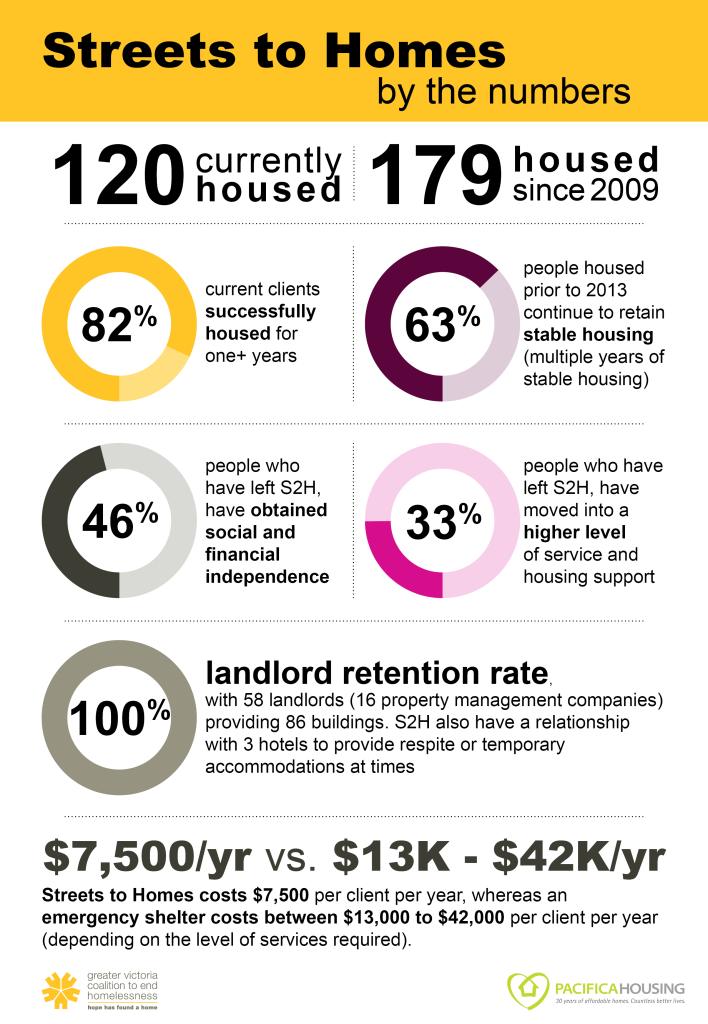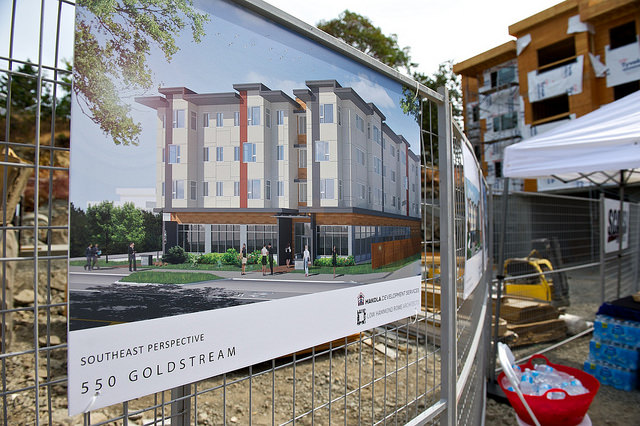Reality: Homelessness not only affects those you see on the streets around the Downtown Core, but is present throughout the 13 municipalities, Salt Spring, and Southern Gulf Islands that make up the Capital Region District. Continue reading
Category Archives: Homelessness
Meet Streets to Homes
 Increased public concern for a lack of safe, affordable housing has led communities all across Canada to look beyond bricks and mortar for long-term solutions. As models of client-centered care become more embedded in social services, housing providers are beginning to adopt a ‘Housing First’ model when working with Canada’s hardest to house.
Increased public concern for a lack of safe, affordable housing has led communities all across Canada to look beyond bricks and mortar for long-term solutions. As models of client-centered care become more embedded in social services, housing providers are beginning to adopt a ‘Housing First’ model when working with Canada’s hardest to house.
Meet Streets to Homes. Continue reading
Affordable Housing – A Key to Ending Homelessness

Image courtesy of BC Housing.
The recommendations presented to Council by the Mayor’s Task Force on Affordable Housing represent an important step towards ending homelessness in Greater Victoria. As an organisation our focus has been those experiencing chronic homelessness. Because so much public attention on this issue is focused on matters of mental health or substance use, there is a tendency to underestimate the impact of the broader issue of housing affordability and the connection to emergency shelter use. Continue reading
Housing vs Shelter
This infographic demonstrates the cost of permanent housing versus an emergency shelter bed. While an emergency shelter bed does cost significantly more to build and operate than a permanent housing unit, the real cost is the personal space. Continue reading
Taking Steps to End Homelessness
Homelessness is back on the front page in our city again this Spring. Concerns about camping in parks along with the interest in micro-housing solutions means that the public eye is focused on the issue to a degree not seen since the Coalition was first founded in 2007.
It is fortuitous then that the Coalition just released Creating Homes Enhancing Communities (CHEC) a detailed plan that highlights how much housing and supports would be required to end chronic homelessness in Greater Victoria. It speaks specifically to the amount of supportive housing required to house those who need more than just financial support to remain housed. Continue reading

